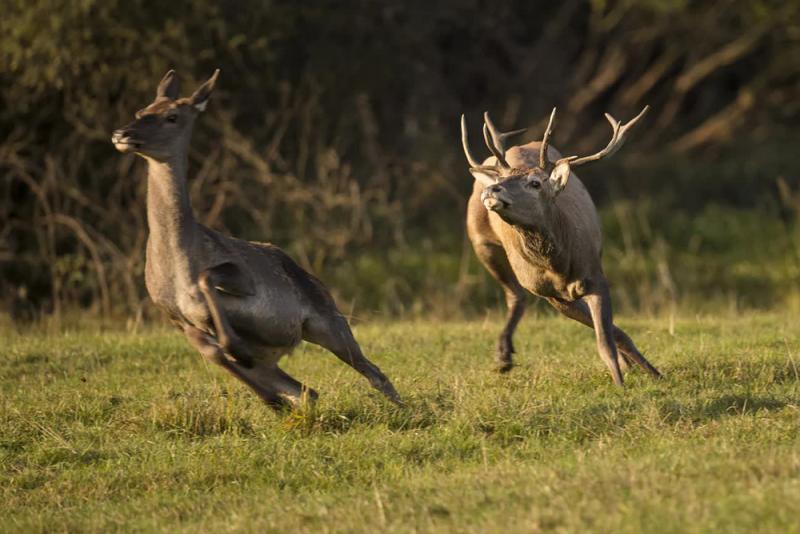September Marks the Return of Trail Cameras

Trail cameras can give you insights for the fall
Trail cameras offer hunters a wealth of information that can ensure success in the upcoming season. They capture everything from buck inventory and movement patterns to identifying trespassers and monitoring food plots. In today’s hunting world, few hunters go afield without a 4g trail cameras.
For many hunters and outdoorsmen, summer is a time for enjoying the beach, lake, or river. There’s nothing more refreshing than a dip in a local watering hole after a long day. However, mid-summer is also the perfect time to start preparing for deer season. Although it may feel distant around September 4, South Carolina hunters will find mid-August approaching fast, with North Carolina's archery season following shortly after Labor Day.
Hunters should use any available time to gather pre-season footage with trail cameras. This effort will greatly enhance their fall hunting experience. Trail cameras can gather a wealth of data on food plots, trails, agricultural fields, mineral licks, major trail crossings, and water holes, among other key locations.
Collecting info
Trail cameras are a valuable tool for gathering data year-round. Although most users focus on the season's approach, the pre-season is ideal for gathering herd and dietary information. Insights into seasonal food preferences and travel patterns can reveal a lot about deer habits during the offseason, helping hunters know exactly where to be when it’s time for the harvest.
Deer depend on various natural food sources and migrate seasonally to access them, including water. Camera surveillance can track how deer use these natural feeding areas, warm-season food plots, and agricultural crops that grow seasonally. By September, in areas rich with agriculture, fields of peanuts and soybeans become prime feeding spots. Bucks and does both gather in these "grocery stores" during the summer, just before the breeding season.
Summer water holes, often overlooked as deer hotspots, are crucial for their survival. Deer, along with other wildlife, rely on these sources to regulate their body temperature. Water consumption is one of the few ways deer can cool themselves, apart from panting.
Monitoring Water Sources
Heat can severely impact furbearing animals, making water sources essential for their survival, particularly during the summer. In regions where water is scarce, deer and other wildlife frequently gather near these water holes. This regular activity makes water sources an ideal location for placing a trail camera.
Whitetails are social animals that develop a hierarchy, which individual deer take the entire year to understand. Younger, subordinate bucks, often 1½- or 2½-year-olds, tend to travel with groups of older, more mature bucks. Camera surveillance can begin tracking these bachelor groups as early as June, though the most useful data usually comes toward the end of summer. September is an optimal time to collect this information. Photographic records of these bucks enable hunters and wildlife managers to identify specific deer and set appropriate harvest goals.
An intensive summer surveillance program can help managers document more than 80% of the resident bucks on their land. Since deer lack the heightened hormonal activity that dominates during mating season, they are more likely to stick to daily routines in the summer. This predictability increases the chances of capturing them on camera. Rich food sources will lure even the most elusive bucks out of hiding, particularly when there is no hunting pressure.
Rotating Cameras
Maximizing the effectiveness of trail cameras is crucial. Cameras should be moved every week or two to document as many deer as possible. Another viable option is purchasing additional cameras, which has become more feasible given the increasing affordability of these devices.
If buying new cameras isn't possible, or if the current inventory is sufficient, it’s important to inspect existing cameras to ensure they are ready for the season. All cameras should be tested to confirm they are functioning properly and capturing clear photos. Nothing is more disappointing than setting up cameras, only to return and find out they weren’t working. Each photo can play a vital role in a surveillance system.
Maintaining cameras can also present challenges, especially with older models. Straps and bungees often deteriorate or become overstretched over time, requiring replacement. However, the most common issue is battery power. Old batteries will likely need to be replaced with fresh ones. For optimal performance, lithium batteries are recommended for sustained, season-long usage.
The sweltering summers of the Carolinas tend to keep the deer woods empty of human activity. Cameras offer an effective method to track the who, why, and when just before hunting season begins. In late summer, deer are more consistent in their daily routines than at any other time of the year. Their primary focus is eating, sleeping, and drinking. Monitoring these patterns with cameras is relatively easy before the onset of the breeding season.








Comments